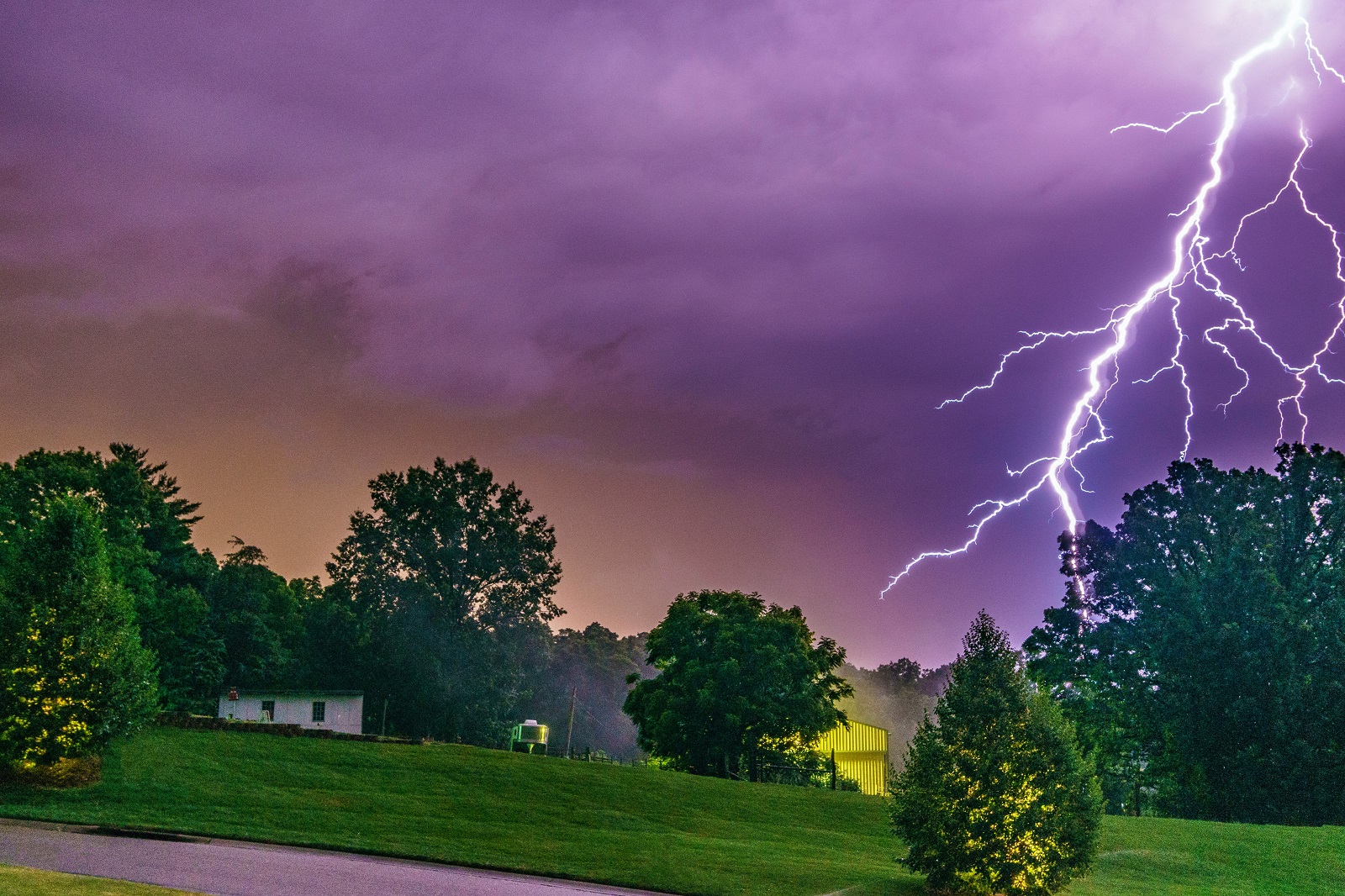According to the National Weather Service, an average of 33 people have died each year from lightning strikes in the US from 2006 to 2018. Also, about 75% of people killed by lightning strikes were in the outdoors, doing activities such as working, hiking, camping, or enjoying water sports during a thunderstorm.
Thus, when a thunderstorm occurs, it’s important to find shelter immediately and exercise caution. But, as shelter isn’t immediately available to everyone caught outdoors, we’ve prepared tips to stay safe from lightning while outdoors, as well. Follow these lightning safety tips to stay safe indoors and outdoors during a thunderstorm.
Lightning Safety Tips: Indoors
- Stay away from windows and doors, and stay off porches, too.
- Don’t touch anything that uses electricity, such as TVs, computers, and cords. Avoid corded phones; use mobile or cordless phones instead.
- Don’t use the plumbing in your home — don’t use the sink in the bathroom or kitchen, and don’t take a shower.
- Avoid leaning on concrete walls and lying on concrete floors. That’s because lightning can travel through metal wires or bars in concrete walls or flooring.
- Take your dog inside during thunderstorms. Dogs that are chained to trees are vulnerable to lightning strikes. Learn more pet emergency preparedness tips.
- Don’t unplug electrical equipment during a thunderstorm to avoid the risk of being struck by lightning.
Lightning Safety Tips: Outdoors
If you’re outside and can’t find a safe, enclosed shelter, follow these lightning safety tips:
- Get off and away from motorcycles, scooters, golf carts, and bicycles.
- Don’t stay near things that can conduct electricity, such as power lines, wire fences, metal pipes, rails, and other metallic paths.
- Don’t stay in open fields and get off elevated areas like mountain ridges or hills. Also, don’t use cliffs or rocky overhangs as shelter. Go to a low place such as a ravine or a valley, but be alert for flash floods.
- If you are in the backcountry or wilderness, get off the mountain as quickly (and safely) as possible. Going to the opposite side of the mountain, from where the clouds are approaching, will help.
- If you’re in a forest, go in a low area under a thick growth of small trees. Yet, never shelter under an isolated tree as they act as natural lightning rods.
- Don’t stay in tents. A tent can become a grounding path for a cloud-to-ground lightning strike because most modern tents have carbon fiber or metal poles. Stay off porches, too.
- Stay away from water and wet items as water is also an electrical conductor. Get out of bodies of water like ponds and lakes.
- Wait at least 30 minutes after hearing the last thunder before you leave your shelter.
- If a person is struck by lightning, call 911 and get medical help right away. Victims can have a variety of symptoms, so be prepared to get help, administer CPR, or treat burns and trauma.
Thunder and lightning storms happen all the time, but following these lightning safety tips can save your life!
For storm damage repair, contact PuroClean
Powerful storms can often have an impact on your home or business. Check out our tips to prepare your property for storms. If your home has suffered damage after a storm, don’t hesitate to call PuroClean — the Paramedics of Property Damage. We can mitigate storm and flood damage, and help bring your property back to pre-loss condition quickly.




 PuroClean of Massapequa
PuroClean of Massapequa